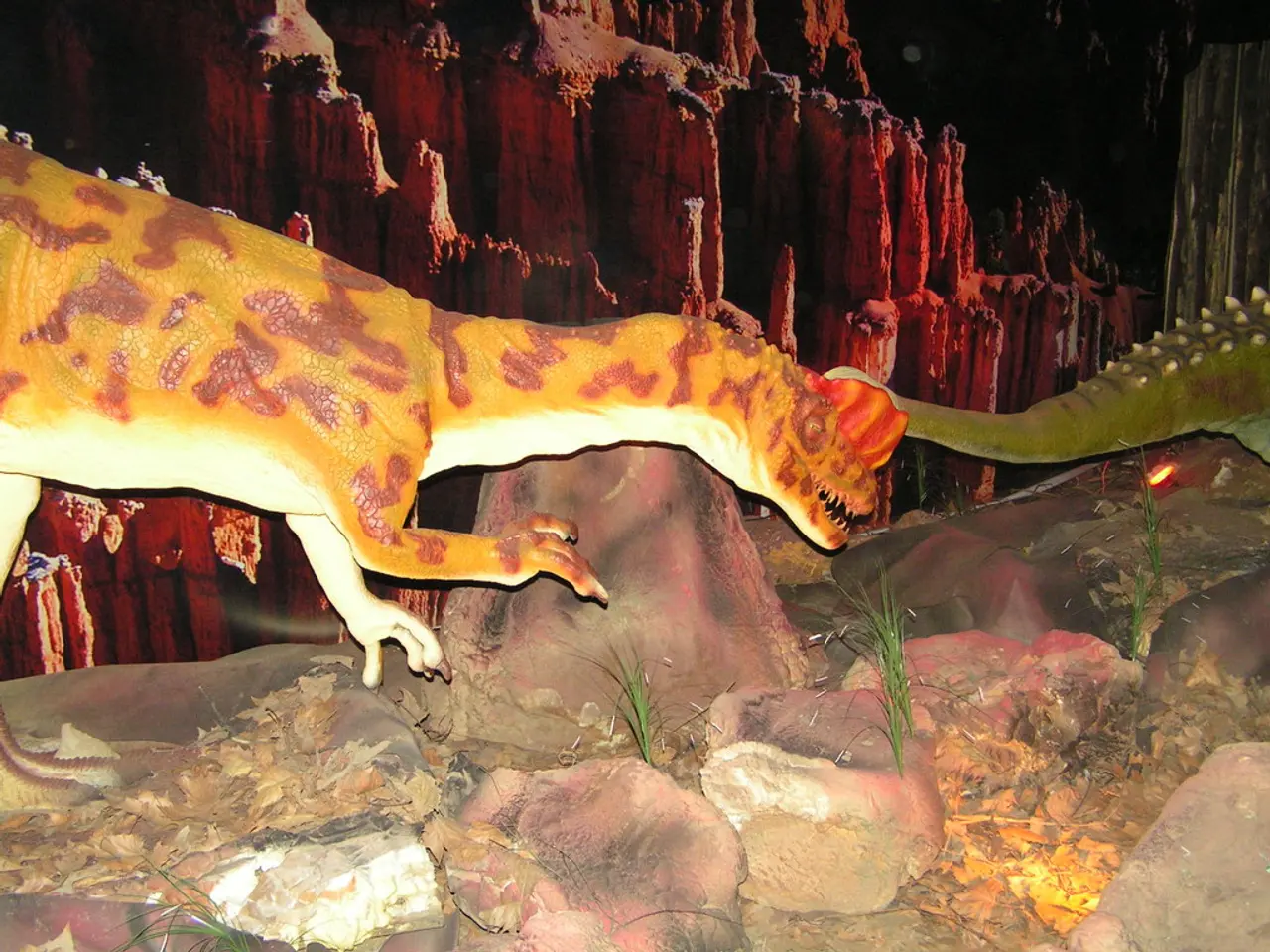A Graduate Student Uncovers a Prehistoric Reptile Species, Combining Fragmented Fossils From Distinct Museums.
In a groundbreaking discovery, a new species of prehistoric reptile, named *Sphenodraco scandentis*, has been unearthed from the Solnhofen Limestone area in Germany. The find was made by Victor Beccari, a PhD student specialising in paleontology, who connected two fossilised halves housed in different museums.
Beccari's revelation came during his examination of reptiles at the Natural History Museum in London. He was struck by a fossil skeleton that bore a striking resemblance to an impression he remembered from the Senckenberg Natural History Museum in Frankfurt. Upon closer inspection, Beccari realised that the two pieces—one containing the fossilised skeleton, the other the impression of that skeleton—had originally been part of the same fossil slab. However, about a century ago, the slab had been split into halves and sold separately, causing the link between them to be lost.
Beccari's insight to reunite these two halves was crucial. Working with his colleagues, he analysed the reunited fossil and identified it as belonging to a previously unknown 145-million-year-old rhynchocephalian reptile species. This reptile, which lived during the Late Jurassic period, had a short body about six inches long, with long limbs and fingers, suggesting it was adapted for an arboreal (tree-dwelling) lifestyle.
The exceptional preservation conditions in the Solnhofen Limestone have allowed for detailed fossil material that enabled this discovery. The animals died in oxygen-poor marine sediments, where they decomposed with minimal disturbance, providing the perfect conditions for fossilisation.
Beccari's discovery underscores the importance of reassessing and comparing dispersed fossil specimens to reveal new species and insights into prehistoric life, especially in a fossil-rich but understudied formation like Solnhofen. Beccari believes that there is a lot more to discover among the Solnhofen fossils, and that the diversity of these animals is likely underestimated.
Several other fossils dating back to the Late Jurassic period have been found in the Solnhofen Limestone area, suggesting a rich and diverse prehistoric ecosystem. Beccari suggests that in many cases, fossils coming from the same place that look somewhat similar are often lumped together, and further study is needed to uncover the true diversity of these ancient creatures.
The discovery of *Sphenodraco scandentis* is a testament to the ongoing efforts to uncover the secrets of our planet's past, and it serves as a reminder of the vast amount of knowledge that remains to be discovered in the fossil records.
The discovery of Sphenodraco scandentis by Victor Beccari, a PhD student specialising in paleontology, highlights the importance of reassessing and comparing dispersed fossil specimens in uncovering new species and insights about prehistoric life. Additionally, Beccari's research underscores the significant role that technology, particularly among fields like environmental science and space-and-astronomy, plays in facilitating such discoveries. Furthermore, this finding reinforces the notion that the Solnhofen Limestone area in Germany, apart from being a rich source of fossils from the Late Jurassic period, might actually be underestimated in terms of the diversity of its inhabitants, a claim which further emphasizes the relevance of continued exploration and study in the field of history.




